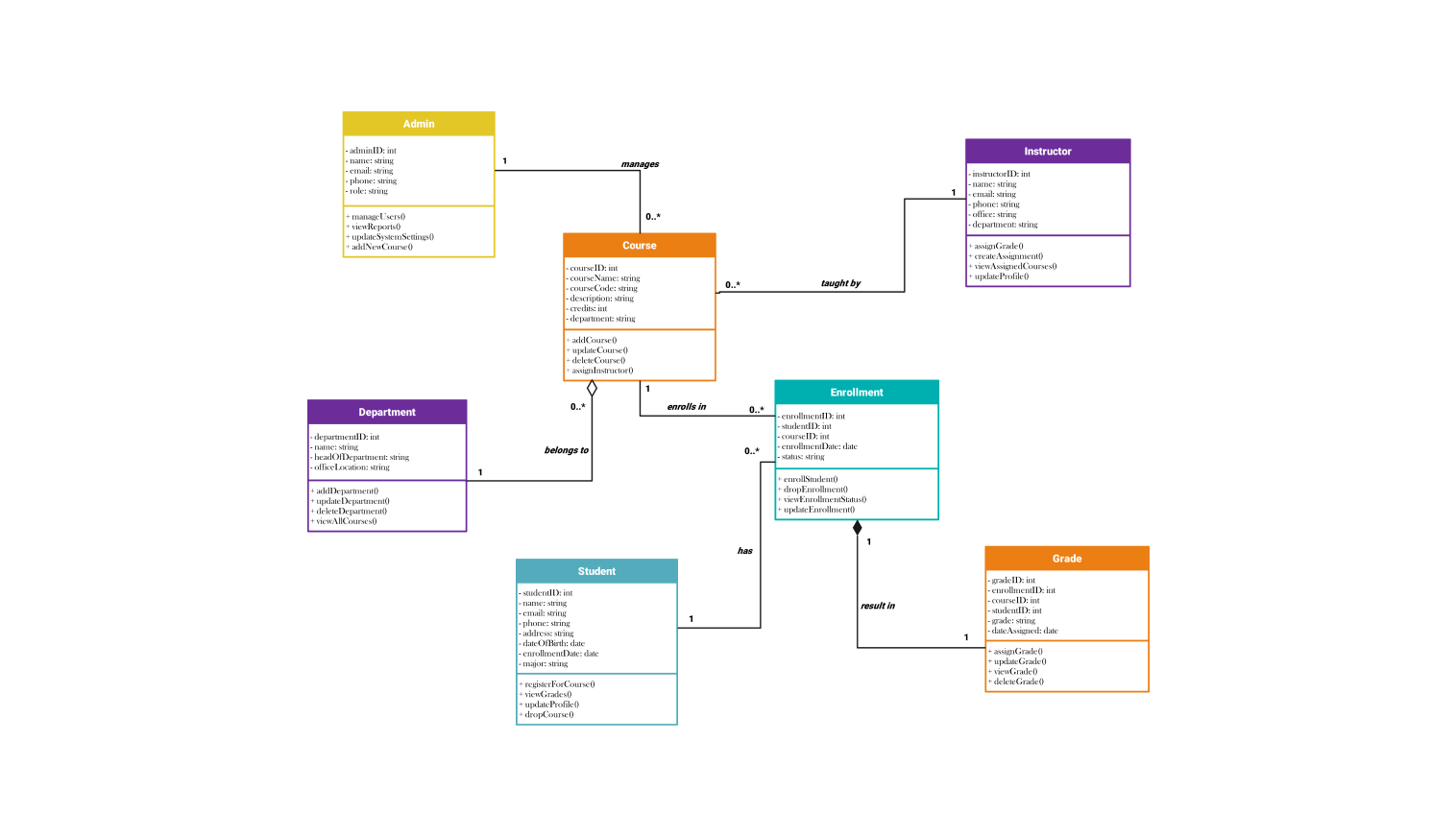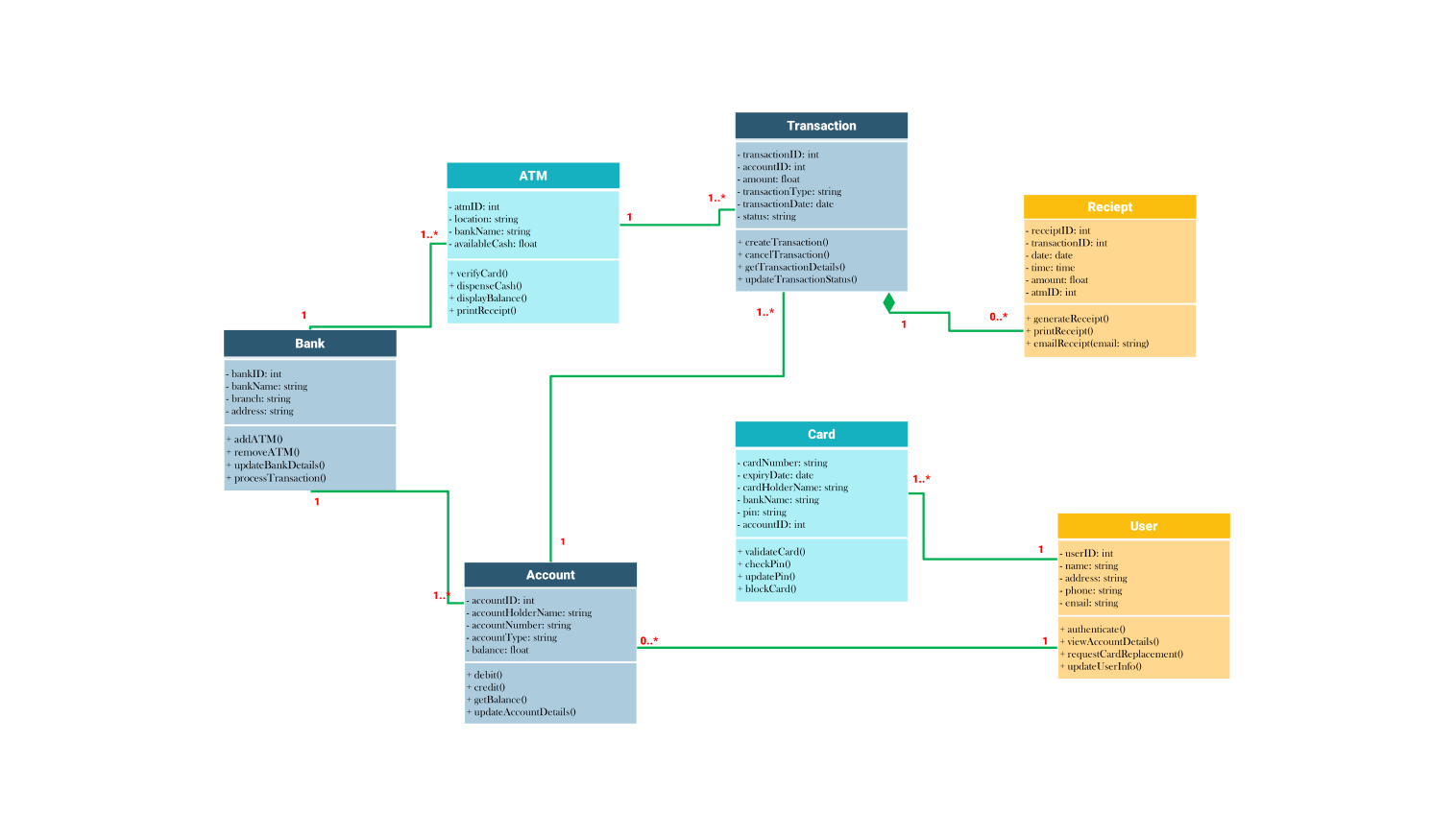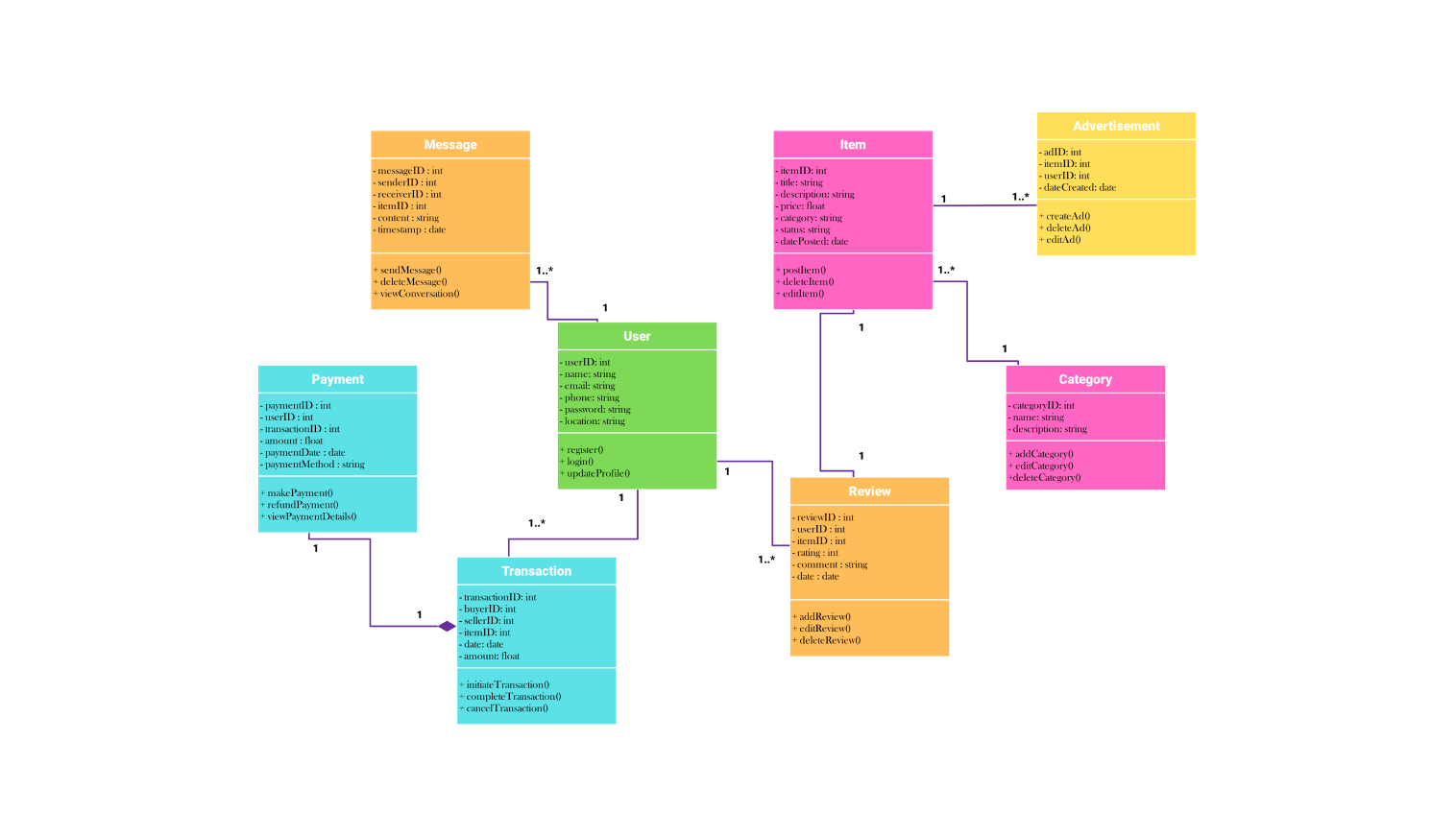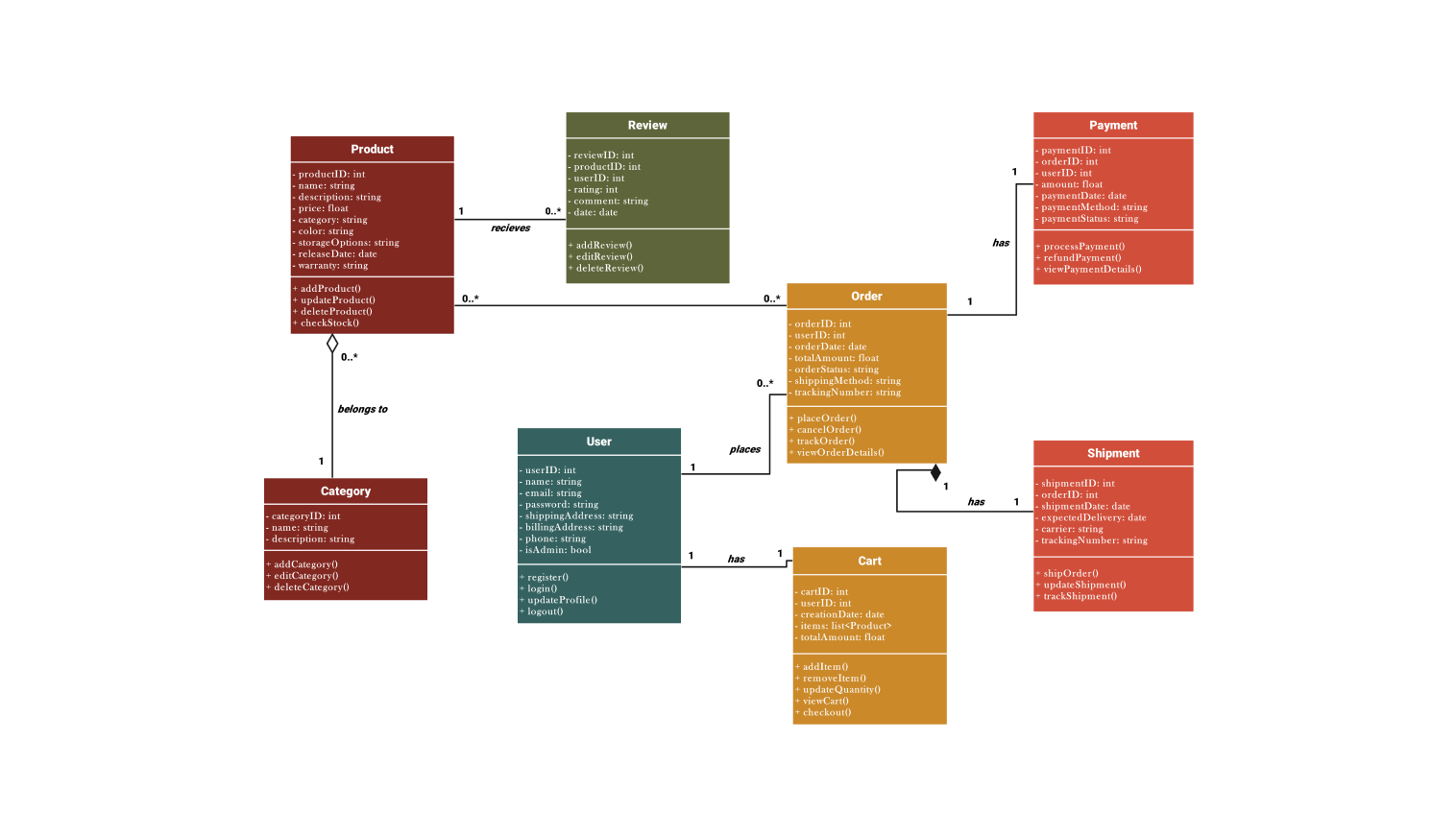- Templates
- Class diagrams templates
- Class diagram college management
About this class diagram for college management
The given class diagram shows the college management system's structure and relations. It aims to make a college's admin functions more efficient. It covers several areas: admin, instructors, courses, departments, students, enrollment, and grades.
The admin class represents the teachers responsible for managing courses. The class has some attributes such as admin ID, name, email, phone, and role. These attributes contain all necessary information about every administrator. The functions that enable this are: managing users, updating profiles, changing system settings, and adding new courses. This makes it convenient for the admin to do their job properly.
A college's teaching staff comprises instructors. They have an ID, name, email, phone numbers, offices, and departments. All these pieces of information help in managing the profiles of instructors. This class can assign grades, create assignments, and update profiles. They make it easy for an instructor to manage course assignments and evaluate students.
The structure of the system is centered on the course class, which outlines the academic courses present in a college. Attributes comprise course ID, course name, course code, description, credits, and department. An admin can manage a course using add, update and delete a course (), and assign instructor () methods. This includes the course's introduction and assignments.
The college’s academic programs are organized into departments. The department class has the department ID, name, head, and office location. This class has functions to manage departments: add, update, and delete departments.
The student class records student information. This consists of student ID, name, email, phone, address, DOB, date of enrollment, and major. It also manages course registration, student profile updates, and class drops.
Academic evaluation relies heavily on grades, and the class grade handles them. The class tracks a student's performance using properties. They are grade ID, enrollment ID, course ID, student ID, grade, and date assigned. The methods assign, update, view, and delete grade () are used to assign and update grades.
How to use this template
Click on Edit free online. After the template opens, customize the diagram. Drag and drop new shapes from the libraries on the left to fit your system's needs.
Edit the text. Style the boxes, lines, and text by clicking on the elements. You can save some common elements in your library. You can reuse them when creating similar diagrams.
Click on the theme icon if you wish to use the “one-click beautify” feature. This feature allows you to change the colors, fonts, and layout of your picture making it look more professional.
Export your file in several formats for later use. Click on export to select the format (.eddx, .pdf, .png, .jpg).
Benefits of the class diagram
The class diagram shows how key classes connect. They include admin, instructor, course, department, student, enrollment, and grade. This diagram shows how various components inside the system work together. It ensures that modern administrative processes are well organized.
The advantages of this template hold immense value for developers and other parties concerned. It encourages transparency in system creation. So, all parts of institutional admin must be connected. So, it will be easier to implement. Upgrades can be made later without issues.
Also, diagrams help the project team communicate. They provide a common frame of reference. This makes discussions and decisions less convoluted during development.
FAQS about the class diagram
-
What are the key entities in a college management system class diagram?
Commonly used key entities might consist of admin, instructor, course, department, student, enrollment, and grade in that order. The system’s primary elements are represented by these entities which define their characteristics and how they interact with one another.
-
How does the class diagram handle course enrollment?
The course enrollment is depicted in the class diagram via the enrollment class which connects students to courses. Its components include details like the joining date and current state. They show an individual's participation in various subjects.
-
What is the class diagram for college management system?
A college management system’s class diagram shows the arrangement of the system by identifying important entities like admin, instructor, student, course, department, enrollment, and grade. It illustrates how they relate to one another as well as their respective attributes and methods making it easier to manage and organize college activities.
Related templates
Get started with EdrawMax today
Create 210 types of diagrams online for free.
Draw a diagram free Draw a diagram free Draw a diagram free Draw a diagram free Draw a diagram free



